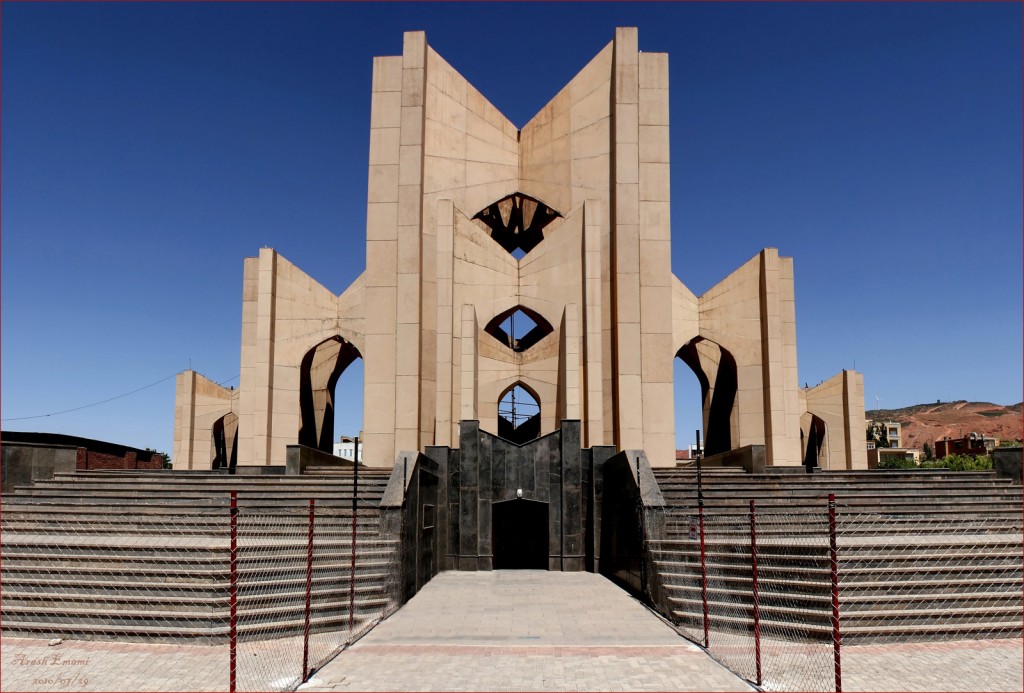(Picture retrieved from: http://commondatastorage.googleapis.com/static.panoramio.com/photos/original/40190988.jpg )
Above is Maqbaratoshoara or “The Mausoleum of Poets” which is located in Iran. In the architecture of this building, you can find similar shapes that result from various transformations. It would be best to present this picture and the following questions to students after they have been introduced to reflections and dilations.
Find the similar shapes in this building:
- How where these similar shapes obtained?
- How many reflections do you see?
- Where is/are the line(s) of symmetry?
- How many dilations do you see?
- Where is/are the center(s) of dilation?
- Do you see any other transformation in this picture?
This picture problem meets the following Common Core State Standard:
CCSS.Math.Content.8.G.A.4
Understand that a two-dimensional figure is similar to another if the second can be obtained from the first by a sequence of rotations, reflections, translations, and dilations; given two similar two-dimensional figures, describe a sequence that exhibits the similarity between them.

I love your post here and found that this would also work for a discussion about functions and scalars since dilation does not preserve distance but does preserve a common ratio. Thus, to help students understand how a function is affected by a coefficient other than 1 which will increase or decrease outputs by common factor.
CCSS.MATH.CONTENT.HSA.SSE.A.1.A
Interpret parts of an expression, such as terms, factors, and coefficients
Hello. I like the way that you incorporated culture into your picture problem. This allows the students to learn about math and specific places in the world that are interesting to learn about.
Another problem that can go with this picture is having the students find the reflection of the picture. You can do this is by cropping the image so that only one half of the image is shown. Then you can take that picture and have students plot it on a grid and find the inverse points to create the other image. Or you can use GeoGebra to find the other half of the image by plotting certain points from the image and using the reflection about a point and a reflection about a line to create the other half of the image.
CCSS.MATH.CONTENT.HSG.CO.A.5
Given a geometric figure and a rotation, reflection, or translation, draw the transformed figure using, e.g., graph paper, tracing paper, or geometry software. Specify a sequence of transformations that will carry a given figure onto another.